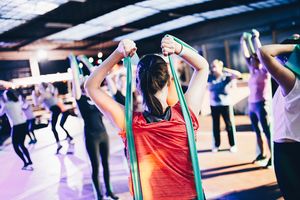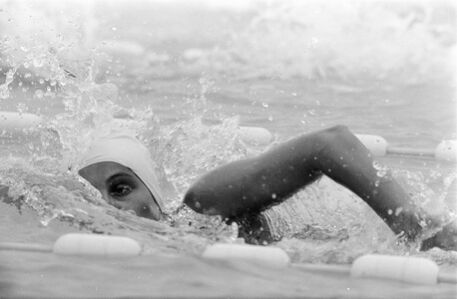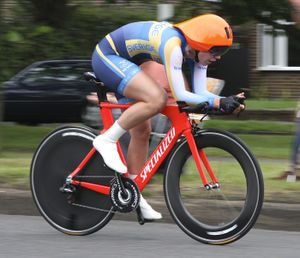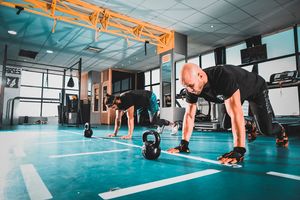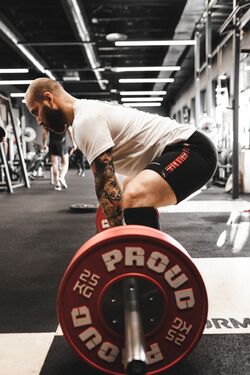Principles of Exercise: Difference between revisions
No edit summary |
m (Category added) |
||
| (46 intermediate revisions by 6 users not shown) | |||
| Line 1: | Line 1: | ||
<div class="editorbox"> | <div class="editorbox">'''Original Editor '''-[[User: Inga Balciuniene|Inga Balciuniene]] | ||
'''Original Editor '''- | |||
'''Top Contributors''' - {{Special:Contributors/{{FULLPAGENAME}}}} | '''Top Contributors''' - {{Special:Contributors/{{FULLPAGENAME}}}} | ||
</div> | </div> | ||
== Introduction == | == Introduction == | ||
[[File:Exercise program.jpeg|right|frameless|399x399px]] | |||
For most adults, an exercise program including [[Aerobic Exercise|aerobic]], [[Strength Training|resistance]], [[flexibility]], and [[Neuromuscular Exercise Program|neuromotor]] exercise training is indispensable to improve and maintain physical fitness and health. An exercise training program ideally is designed to meet individual health and physical fitness goals within the context of individual health status, function, and the respective physical and social environment<ref name=":0">Garber CE, Blissmer B, Deschenes MR, Franklin BA, Lamonte MJ, Lee IM, Nieman DC, Swain DP. [https://academiccommons.columbia.edu/doi/10.7916/D8CR5T2R Quantity and quality of exercise for developing and maintaining cardiorespiratory, musculoskeletal, and neuromotor fitness in apparently healthy adults: guidance for prescribing exercise.]</ref>. [[Physical Activity|Physical activity]] and fitness are associated with a lower prevalence of [[Chronic Disease|chronic diseases]], such as [[Coronary Artery Disease (CAD)|heart disease]], [[Oncology|cancer,]] [[Hypertension|high blood pressure]], and [[diabetes]].<ref>Rivera-Brown AM, Frontera WR. [https://pubmed.ncbi.nlm.nih.gov/23174541/ Principles of exercise physiology: responses to acute exercise and long-term adaptations to training.] Pm&r. 2012 Nov 1;4(11):797-804.Available:https://pubmed.ncbi.nlm.nih.gov/23174541/ (accessed 14.9.2021)</ref> | |||
[[Therapeutic Exercise|Therapeutic exercise]] is one of the core skills upon which the profession of physiotherapy is based. By considering definitions of therapeutic exercise, physical activity, and exercise, it is possible to see that, although therapeutic exercise contains the components of both physical activity and exercise, it also provides a systematic exercise programme for remediation of impairments and improvement of function<ref name=":2">Glynn AJ, Fiddler H. [https://books.google.com/books?hl=en&lr=&id=Mzzm0V5MXbUC&oi=fnd&pg=PP1&dq=Glynn+A,++Fiddler+H.The+Physiotherapist%27s+Pocket+Guide+to+Exercise+Assessment,+Prescription+and+Training,Churchill+Livingstone,+2009.&ots=0p1elDdSWF&sig=2dRT3FcL9vtORcObHOb3JC3Vw-Q The Physiotherapist's Pocket Guide to Exercise E-Book: Assessment, Prescription and Training.] Elsevier Health Sciences; 2009 Apr 7.</ref>. | |||
=== What is the difference between physical activity and exercise? === | |||
Physical activity refers to the contraction of skeletal [[muscle]] that produces bodily movement and requires energy. Exercise is a physical activity that is planned and is performed with the goal of attaining or maintaining physical fitness. Physical fitness is a set of traits that allows an individual to perform physical activity<ref>Eric H, Gary J. Exercise and the Heart.Cardiology Secrets (Third Edition)2010, Pages 311-315</ref>. | |||
== Designing a Therapeutic Exercise Programme == | |||
[[File:Exercise group.jpg|right|frameless]] | |||
A programme may include a range of different types of exercise such as those for improving or preventing deterioration in aerobic capacity, muscle strength, [https://www.physio-pedia.com/Strength_Training_versus_Power_Training?utm_source=physiopedia&utm_medium=search&utm_campaign=ongoing_internal power] and [[Endurance Exercise|endurance]], flexibility or range of movement, [[balance]], coordination, and [[agility]]. | |||
* Many different professionals are involved in delivering advice on physical activity and exercise to various population groups. We, as Physiotherapists, are equipped with special skills to provide therapeutic exercise programmes. We have an understanding of the underlying disease process or pathology, exercise physiology, biomechanics, and physical principles. | |||
* Physiotherapists need to identify appropriate treatment [[Goal Setting in Rehabilitation|goals]] in conjunction with the patient <ref>Melin J, Nordin Å, Feldthusen C, Danielsson L. [https://pubmed.ncbi.nlm.nih.gov/31448979/ Goal-setting in physiotherapy: exploring a person-centered perspective.] Physiother Theory Pract [Internet] 2019 Jul 11 [Cited 2023 Apr 25]; 37(8):863-880</ref>. | |||
In general, exercise training and sport sessions should: | |||
# Start with a 10–15-min dynamic warm-up period <ref>Silva LM, Neiva HP, Marques MC, Izquierdo M, Marinho DA. [https://link.springer.com/article/10.1007/s40279-018-0958-5 Effects of Warm-Up, Post-Warm-Up, and Re-Warm-Up Strategies on Explosive Efforts in Team Sports: A Systematic Review.] Sports Med [Internet] 2018 Jul 2 [Cited 2023 Apr 25] 48:2285–2299</ref> | |||
# Finish with an active cool-down period of less intense activity <ref>Bas Van Hooren BV, Peake JM. [https://link.springer.com/article/10.1007/s40279-018-0916-2?fbclid=IwAR1GBKbk7gU3i9QEsC8sMyDiD1zrG8lKXwObAWBMBcmTvl5TENRFVFu37pc Do We Need a Cool-Down After Exercise? A Narrative Review of the Psychophysiological Effects and the Effects on Performance, Injuries and the Long-Term Adaptive Response.] Sports Med. [Internet] 2018 Apr 16 [Cited 2023 Apr 25]; 48:1575–1595 </ref> | |||
Between the training sessions, there must be enough time to recover. | |||
== Common training principles == | |||
=== Overload === | |||
The | A system must be exercised at a level beyond which it is presently accustomed for a training effect to occur. The system being exercised will gradually adapt to the overload or training stimulus being applied, and this will go on happening as long as the training stimulus continues to be increased until the tissue can no longer adapt. The training stimulus applied consists of different variables such as intensity, duration, and frequency of exercise. It is important to give the system being exercised enough time to recover and only apply a training stimulus again when the system is no longer fatigued<ref name=":1">Glynn AJ, Fiddler H. [https://books.google.com/books?hl=en&lr=&id=Mzzm0V5MXbUC&oi=fnd&pg=PP1&dq=Glynn+A,++Fiddler+H.The+Physiotherapist%27s+Pocket+Guide+to+Exercise+Assessment,+Prescription+and+Training,Churchill+Livingstone,+2009.&ots=0p1elDdTWF&sig=0vs-6LlV1D6xrx_f1EIyLyxpHMQ The Physiotherapist's Pocket Guide to Exercise E-Book: Assessment, Prescription and Training.] Elsevier Health Sciences; 2009 Apr 7.</ref>. | ||
=== Specificity === | |||
Any exercise will train a system for the particular task being carried out as the training stimulus. Examples below: | |||
* A training programme including muscle strengthening will train the muscle in the range that it is working and the way that the muscle is being used, i.e. isometrically, concentrically, or eccentrically. It is important that any exercise to strengthen muscle targets the muscle range and type of muscle work specific to the task required. | |||
* Riding a bicycle requires concentric knee extension from mid-to inner range, as the pedal is pushed down to propel the bicycle along. A cyclist wishing to increase the [[Strength Training|strength]] of his [[Quadriceps Muscle|quadriceps]] will need to train concentrically in mid-to inner range. Depending on the presenting problem, the required task should become part of the training programme at an appropriate stage<ref name=":1" />. | |||
=== Reversibility === | |||
The beneficial effects of training begin to be lost as soon as training stops. This happens in a similar time frame as it takes to train the system<ref name=":1" />. | |||
[[File:Swimmer.jpg|right|frameless|457x457px]] | |||
=== | === Individuality === | ||
Variation in response to a training programme will occur in a population as people respond differently to the same training programme. This response can be explained by: the initial fitness level of the individual; their health status; and their genetic makeup. Training programmes should be designed to take this into account. | |||
* Some individuals will have a predisposition to endurance training and some to strength training. | |||
* Some will respond well to a training programme and others much more slowly. | |||
* Individuals with a lower fitness level before starting an exercise programme show improvement in fitness more quickly than those who are relatively fit before training begins. | |||
* Some individuals with health conditions may not be able to work at the same kind of intensity as a healthy individual and so will take longer to achieve a training goal<ref name=":1" />. | |||
=== Motor learning === | |||
[https://www.physio-pedia.com/Motor_Learning_-_Back_to_the_Basics?utm_source=physiopedia&utm_medium=search&utm_campaign=ongoing_internal Motor learning] is concerned with the acquisition of motor skills and how the individual interacts with the task to be learned and the environment. This uses perception or sensing, cognition, and motor processes. Learning a skill is a relatively permanent change in an individual and there are several stages that the person will go through before the skill is retained. | |||
# Initially, a person may be unable to perform a task. With practice, they will achieve the task but it will not be carried out efficiently. | |||
# With further practice and feedback, the person will be able to carry out the task to a reasonable standard but they may forget how to do it if they do not do the task regularly. | |||
# In the final stage, the person will carry out the task efficiently, in a skilled manner and will not forget how to do the task. | |||
When teaching a patient an exercise: | |||
* Explain or demonstrate how to carry out the exercise, doing this as a whole if the exercise is simple or breaking a complex exercise into parts. | |||
* When the person is able to carry out the component parts, the exercise should be practiced as a whole. | |||
* Both the physiotherapist and the person should evaluate how well the exercise was performed and if the exercise task was completed. | |||
* The physiotherapist should allow the patient a short time to evaluate their own performance, before providing feedback prior to subsequent practice. | |||
* Practicing a skill (or exercise) in a varied manner, for example at different speeds or in different environments, will help with learning<ref name=":1" />. | |||
=== Safety === | |||
Whenever an individual exercises, there is a risk that they may injure themselves. Safety factors are considered here in relation to the physiotherapist, the environment and the patient or person carrying out the exercise<ref name=":1" />. | |||
== Basic Exercise Principles == | |||
[[File:Cyclist Emilia Fahlin SWE (8597987314).jpg|right|frameless]] | |||
Practicing the basic exercise principles is crucial for developing an effective fitness training program. The principles of exercise apply to everyone at all levels of physical training, from the Olympic champion to the weekend golfer. You can easily remember the basic principles of exercise if you use the so-called [[FITT Principle|FITT]] factors, where FITT stands for: | |||
Intensity | # Frequency, | ||
# Intensity, | |||
# Time, and | |||
# Type of activity.<ref>Takken T, Giardini A, Reybrouck T, Gewillig M, Hövels-Gürich HH, Longmuir PE, McCrindle BW, Paridon SM, Hager A. [https://academic.oup.com/eurjpc/article-abstract/19/5/1034/5928152 Recommendations for physical activity, recreation sport, and exercise training in paediatric patients with congenital heart disease: a report from the Exercise, Basic & Translational Research Section of the European Association of Cardiovascular Prevention and Rehabilitation, the European Congenital Heart and Lung Exercise Group, and the Association for European Paediatric Cardiology.] European journal of preventive cardiology. 2012 Oct 1;19(5):1034-65.</ref> | |||
The | The video below summarizes FITT Principle (ACSM recommends to use the FITT method<ref name=":3">American College of Sports Medicine.ACSM's Guidelines for Exercise Testing, 2017.</ref>){{#ev:youtube|https://youtu.be/yAFb0vxopmc|300}}<ref name=":4">Lynn Hefele. Brain Bites - The F.I.T.T Principle. Available from https://youtube/yAFb0vxopmc[Accessed 2/09/2020]</ref> | ||
{{#ev:youtube| | |||
=== Frequency (how often) === | |||
Exercise should be carried out 3-5 days a week. Training three times a week produces significant training effects; however, training 5 days a week at a lower-intensity exercise may be more manageable for some people. Little additional benefit is seen with more than five training sessions a week, and the risk of injury is increased. Training twice a week does not produce increases in [[VO2 Max|VO<sub>2max</sub>]]; however, it may produce some functional changes and it is probably better than no exercise at all<ref name=":1" />. Moderate-intensity aerobic exercise done at least 5 d ∙ wk or vigorous-intensity aerobic exercise done at least 3 d ∙ wk or a weekly combination of 3–5 d ∙ wk of moderate and vigorous-intensity exercise is recommended for most adults to achieve and maintain health/fitness benefits<ref name=":3" />. | |||
=== Intensity (how hard) === | |||
Intensity can vary between light, moderate and vigorous intensity activities. For example, walking slowly is a low intensity activity, walking briskly or shooting around a basketball is a moderate intensity activity and running (>5mph) is a vigorous intensity activity. A good rule of thumb is that a person doing moderate-intensity aerobic activity can talk, but not sing. A person doing vigorous-intensity activity cannot say more than a few words without pausing for a breath<ref>HealthySD gov [https://healthysd.gov/use-the-fitt-chart-to-get-fit/ Use the FITT chart to get fit] Available:https://healthysd.gov/use-the-fitt-chart-to-get-fit/ (accessed 14.9.2021)</ref>. | |||
Intensity can be monitored by [https://www.physio-pedia.com/Heart_Rate?utm_source=physiopedia&utm_medium=search&utm_campaign=ongoing_internal heart rate] in most patients, although some patients may have pathology or be on drug treatment that affects their HR response to exercise (in which case HR cannot be used to monitor exercise intensity). The short video below shows heart rate calculation. {{#ev:youtube|tg6zjBRG3X8}}<ref>Vivo Phys - Evan Matthews. Exercise Intensity as a Percentage of Maximal Heart Rate Example Calculations. Available from: https://www.youtube.com/watch?v=tg6zjBRG3X8 [last accessed 12/04/2023]</ref> | |||
Measures of perceived effort and affective valence (i.e., the pleasantness of exercise) can be used to modulate or refine the prescribed exercise intensity. e.g. [[Borg Rating Of Perceived Exertion|Borg Rating of Perceived Exertion]] (RPE) Scales, Talk Test<ref name=":3" />. | |||
=== | === Time (duration or how long) === | ||
A total of 20-60 minutes of continuous or intermittent aerobic activity a day should be performed. The activity can be divided into a minimum of lO-minute bouts throughout the day. The duration of training is dependent on intensity. Individuals starting at the lower end of the training band need to sustain exercise longer (30-60 minutes) to achieve training effects<ref name=":1" />. | |||
=== Type === | |||
Refers to the sort of activity to complete e.g., Aerobic activities like walking, jogging, biking, swimming or dancing or strengthening activities such as exercises using exercise bands, weight machines or hand-held weights. | |||
== Putting it together == | |||
[[File:Pushup.jpeg|right|frameless]] | |||
150 minutes of moderate to vigorous physical activity is recommended each week. For some, a serious behavior change is needed and for others, a modification to current behaviors is more appropriate. When adopting or modifying a physical activity routine, it is important to set realistic goals. Too often, individuals expect to lose unrealistic amounts of weight, run faster and longer and start seeing drastic body composition changes instantly. Instead, use the acronym S.M.A.R.T. | |||
* Specific is the what, where and how of the goal. | |||
* Measurable is how you will evaluate whether or not you met the goal. | |||
* Achievable is setting a goal that you can accomplish. | |||
* Realistic is setting a goal that is challenging, but attainable. | |||
* Timely relates to when you want to achieve your goal by, and what time frame you have to reach your goal. | |||
Putting the FITT principle together, one can effectively plan an exercise routine and set a S.M.A.R.T. goal. | |||
== See Also == | |||
[[File:Weight lifting.jpeg|right|frameless|375x375px]] | |||
[[Anaerobic Exercise]] : Anaerobic high intensity interval training (HIIT) is a highly desirable workout, because it engaging all muscle fibers, the fast twitch as well as the slow twitch. This makes anaerobic (HIIT) good for a complete training effect. The benefits from anaerobic (HIT) exercise depend on the effort put in. Maximum “effort” by a large muscle mass, such as the legs, produces optimum benefits for the whole body. | |||
[[Aerobic Exercise]]: Aerobic exercises mainly shows an effect in health-related components of fitness especially cardiovascular endurance and body composition. | |||
[[Strength Training]] : Strength training (also known as resistance exercise) increases [[muscle]] strength by making muscles work against a weight or force. Resistance exercise is an [[Anaerobic Capacity|anaerobic]] exercise. | |||
[[Endurance Exercise]] | |||
== References == | == References == | ||
<references /> | <references /> | ||
[[Category:Sports Medicine]] | [[Category:Sports Medicine]] | ||
[[Category:Exercise Therapy]] | |||
Latest revision as of 10:55, 25 April 2023
Top Contributors - Inga Balciuniene, Chrysolite Jyothi Kommu, Lucinda hampton, Rebecca Willis, Naomi O'Reilly, WikiSysop, Kim Jackson, Wanda van Niekerk, Chelsea Mclene and Aminat Abolade
Introduction[edit | edit source]
For most adults, an exercise program including aerobic, resistance, flexibility, and neuromotor exercise training is indispensable to improve and maintain physical fitness and health. An exercise training program ideally is designed to meet individual health and physical fitness goals within the context of individual health status, function, and the respective physical and social environment[1]. Physical activity and fitness are associated with a lower prevalence of chronic diseases, such as heart disease, cancer, high blood pressure, and diabetes.[2]
Therapeutic exercise is one of the core skills upon which the profession of physiotherapy is based. By considering definitions of therapeutic exercise, physical activity, and exercise, it is possible to see that, although therapeutic exercise contains the components of both physical activity and exercise, it also provides a systematic exercise programme for remediation of impairments and improvement of function[3].
What is the difference between physical activity and exercise?[edit | edit source]
Physical activity refers to the contraction of skeletal muscle that produces bodily movement and requires energy. Exercise is a physical activity that is planned and is performed with the goal of attaining or maintaining physical fitness. Physical fitness is a set of traits that allows an individual to perform physical activity[4].
Designing a Therapeutic Exercise Programme[edit | edit source]
A programme may include a range of different types of exercise such as those for improving or preventing deterioration in aerobic capacity, muscle strength, power and endurance, flexibility or range of movement, balance, coordination, and agility.
- Many different professionals are involved in delivering advice on physical activity and exercise to various population groups. We, as Physiotherapists, are equipped with special skills to provide therapeutic exercise programmes. We have an understanding of the underlying disease process or pathology, exercise physiology, biomechanics, and physical principles.
- Physiotherapists need to identify appropriate treatment goals in conjunction with the patient [5].
In general, exercise training and sport sessions should:
- Start with a 10–15-min dynamic warm-up period [6]
- Finish with an active cool-down period of less intense activity [7]
Between the training sessions, there must be enough time to recover.
Common training principles[edit | edit source]
Overload[edit | edit source]
A system must be exercised at a level beyond which it is presently accustomed for a training effect to occur. The system being exercised will gradually adapt to the overload or training stimulus being applied, and this will go on happening as long as the training stimulus continues to be increased until the tissue can no longer adapt. The training stimulus applied consists of different variables such as intensity, duration, and frequency of exercise. It is important to give the system being exercised enough time to recover and only apply a training stimulus again when the system is no longer fatigued[8].
Specificity[edit | edit source]
Any exercise will train a system for the particular task being carried out as the training stimulus. Examples below:
- A training programme including muscle strengthening will train the muscle in the range that it is working and the way that the muscle is being used, i.e. isometrically, concentrically, or eccentrically. It is important that any exercise to strengthen muscle targets the muscle range and type of muscle work specific to the task required.
- Riding a bicycle requires concentric knee extension from mid-to inner range, as the pedal is pushed down to propel the bicycle along. A cyclist wishing to increase the strength of his quadriceps will need to train concentrically in mid-to inner range. Depending on the presenting problem, the required task should become part of the training programme at an appropriate stage[8].
Reversibility[edit | edit source]
The beneficial effects of training begin to be lost as soon as training stops. This happens in a similar time frame as it takes to train the system[8].
Individuality[edit | edit source]
Variation in response to a training programme will occur in a population as people respond differently to the same training programme. This response can be explained by: the initial fitness level of the individual; their health status; and their genetic makeup. Training programmes should be designed to take this into account.
- Some individuals will have a predisposition to endurance training and some to strength training.
- Some will respond well to a training programme and others much more slowly.
- Individuals with a lower fitness level before starting an exercise programme show improvement in fitness more quickly than those who are relatively fit before training begins.
- Some individuals with health conditions may not be able to work at the same kind of intensity as a healthy individual and so will take longer to achieve a training goal[8].
Motor learning[edit | edit source]
Motor learning is concerned with the acquisition of motor skills and how the individual interacts with the task to be learned and the environment. This uses perception or sensing, cognition, and motor processes. Learning a skill is a relatively permanent change in an individual and there are several stages that the person will go through before the skill is retained.
- Initially, a person may be unable to perform a task. With practice, they will achieve the task but it will not be carried out efficiently.
- With further practice and feedback, the person will be able to carry out the task to a reasonable standard but they may forget how to do it if they do not do the task regularly.
- In the final stage, the person will carry out the task efficiently, in a skilled manner and will not forget how to do the task.
When teaching a patient an exercise:
- Explain or demonstrate how to carry out the exercise, doing this as a whole if the exercise is simple or breaking a complex exercise into parts.
- When the person is able to carry out the component parts, the exercise should be practiced as a whole.
- Both the physiotherapist and the person should evaluate how well the exercise was performed and if the exercise task was completed.
- The physiotherapist should allow the patient a short time to evaluate their own performance, before providing feedback prior to subsequent practice.
- Practicing a skill (or exercise) in a varied manner, for example at different speeds or in different environments, will help with learning[8].
Safety[edit | edit source]
Whenever an individual exercises, there is a risk that they may injure themselves. Safety factors are considered here in relation to the physiotherapist, the environment and the patient or person carrying out the exercise[8].
Basic Exercise Principles[edit | edit source]
Practicing the basic exercise principles is crucial for developing an effective fitness training program. The principles of exercise apply to everyone at all levels of physical training, from the Olympic champion to the weekend golfer. You can easily remember the basic principles of exercise if you use the so-called FITT factors, where FITT stands for:
- Frequency,
- Intensity,
- Time, and
- Type of activity.[9]
The video below summarizes FITT Principle (ACSM recommends to use the FITT method[10])
Frequency (how often)[edit | edit source]
Exercise should be carried out 3-5 days a week. Training three times a week produces significant training effects; however, training 5 days a week at a lower-intensity exercise may be more manageable for some people. Little additional benefit is seen with more than five training sessions a week, and the risk of injury is increased. Training twice a week does not produce increases in VO2max; however, it may produce some functional changes and it is probably better than no exercise at all[8]. Moderate-intensity aerobic exercise done at least 5 d ∙ wk or vigorous-intensity aerobic exercise done at least 3 d ∙ wk or a weekly combination of 3–5 d ∙ wk of moderate and vigorous-intensity exercise is recommended for most adults to achieve and maintain health/fitness benefits[10].
Intensity (how hard)[edit | edit source]
Intensity can vary between light, moderate and vigorous intensity activities. For example, walking slowly is a low intensity activity, walking briskly or shooting around a basketball is a moderate intensity activity and running (>5mph) is a vigorous intensity activity. A good rule of thumb is that a person doing moderate-intensity aerobic activity can talk, but not sing. A person doing vigorous-intensity activity cannot say more than a few words without pausing for a breath[12].
Intensity can be monitored by heart rate in most patients, although some patients may have pathology or be on drug treatment that affects their HR response to exercise (in which case HR cannot be used to monitor exercise intensity). The short video below shows heart rate calculation.
Measures of perceived effort and affective valence (i.e., the pleasantness of exercise) can be used to modulate or refine the prescribed exercise intensity. e.g. Borg Rating of Perceived Exertion (RPE) Scales, Talk Test[10].
Time (duration or how long)[edit | edit source]
A total of 20-60 minutes of continuous or intermittent aerobic activity a day should be performed. The activity can be divided into a minimum of lO-minute bouts throughout the day. The duration of training is dependent on intensity. Individuals starting at the lower end of the training band need to sustain exercise longer (30-60 minutes) to achieve training effects[8].
Type[edit | edit source]
Refers to the sort of activity to complete e.g., Aerobic activities like walking, jogging, biking, swimming or dancing or strengthening activities such as exercises using exercise bands, weight machines or hand-held weights.
Putting it together[edit | edit source]
150 minutes of moderate to vigorous physical activity is recommended each week. For some, a serious behavior change is needed and for others, a modification to current behaviors is more appropriate. When adopting or modifying a physical activity routine, it is important to set realistic goals. Too often, individuals expect to lose unrealistic amounts of weight, run faster and longer and start seeing drastic body composition changes instantly. Instead, use the acronym S.M.A.R.T.
- Specific is the what, where and how of the goal.
- Measurable is how you will evaluate whether or not you met the goal.
- Achievable is setting a goal that you can accomplish.
- Realistic is setting a goal that is challenging, but attainable.
- Timely relates to when you want to achieve your goal by, and what time frame you have to reach your goal.
Putting the FITT principle together, one can effectively plan an exercise routine and set a S.M.A.R.T. goal.
See Also[edit | edit source]
Anaerobic Exercise : Anaerobic high intensity interval training (HIIT) is a highly desirable workout, because it engaging all muscle fibers, the fast twitch as well as the slow twitch. This makes anaerobic (HIIT) good for a complete training effect. The benefits from anaerobic (HIT) exercise depend on the effort put in. Maximum “effort” by a large muscle mass, such as the legs, produces optimum benefits for the whole body.
Aerobic Exercise: Aerobic exercises mainly shows an effect in health-related components of fitness especially cardiovascular endurance and body composition.
Strength Training : Strength training (also known as resistance exercise) increases muscle strength by making muscles work against a weight or force. Resistance exercise is an anaerobic exercise.
References[edit | edit source]
- ↑ Garber CE, Blissmer B, Deschenes MR, Franklin BA, Lamonte MJ, Lee IM, Nieman DC, Swain DP. Quantity and quality of exercise for developing and maintaining cardiorespiratory, musculoskeletal, and neuromotor fitness in apparently healthy adults: guidance for prescribing exercise.
- ↑ Rivera-Brown AM, Frontera WR. Principles of exercise physiology: responses to acute exercise and long-term adaptations to training. Pm&r. 2012 Nov 1;4(11):797-804.Available:https://pubmed.ncbi.nlm.nih.gov/23174541/ (accessed 14.9.2021)
- ↑ Glynn AJ, Fiddler H. The Physiotherapist's Pocket Guide to Exercise E-Book: Assessment, Prescription and Training. Elsevier Health Sciences; 2009 Apr 7.
- ↑ Eric H, Gary J. Exercise and the Heart.Cardiology Secrets (Third Edition)2010, Pages 311-315
- ↑ Melin J, Nordin Å, Feldthusen C, Danielsson L. Goal-setting in physiotherapy: exploring a person-centered perspective. Physiother Theory Pract [Internet] 2019 Jul 11 [Cited 2023 Apr 25]; 37(8):863-880
- ↑ Silva LM, Neiva HP, Marques MC, Izquierdo M, Marinho DA. Effects of Warm-Up, Post-Warm-Up, and Re-Warm-Up Strategies on Explosive Efforts in Team Sports: A Systematic Review. Sports Med [Internet] 2018 Jul 2 [Cited 2023 Apr 25] 48:2285–2299
- ↑ Bas Van Hooren BV, Peake JM. Do We Need a Cool-Down After Exercise? A Narrative Review of the Psychophysiological Effects and the Effects on Performance, Injuries and the Long-Term Adaptive Response. Sports Med. [Internet] 2018 Apr 16 [Cited 2023 Apr 25]; 48:1575–1595
- ↑ 8.0 8.1 8.2 8.3 8.4 8.5 8.6 8.7 Glynn AJ, Fiddler H. The Physiotherapist's Pocket Guide to Exercise E-Book: Assessment, Prescription and Training. Elsevier Health Sciences; 2009 Apr 7.
- ↑ Takken T, Giardini A, Reybrouck T, Gewillig M, Hövels-Gürich HH, Longmuir PE, McCrindle BW, Paridon SM, Hager A. Recommendations for physical activity, recreation sport, and exercise training in paediatric patients with congenital heart disease: a report from the Exercise, Basic & Translational Research Section of the European Association of Cardiovascular Prevention and Rehabilitation, the European Congenital Heart and Lung Exercise Group, and the Association for European Paediatric Cardiology. European journal of preventive cardiology. 2012 Oct 1;19(5):1034-65.
- ↑ 10.0 10.1 10.2 American College of Sports Medicine.ACSM's Guidelines for Exercise Testing, 2017.
- ↑ Lynn Hefele. Brain Bites - The F.I.T.T Principle. Available from https://youtube/yAFb0vxopmc[Accessed 2/09/2020]
- ↑ HealthySD gov Use the FITT chart to get fit Available:https://healthysd.gov/use-the-fitt-chart-to-get-fit/ (accessed 14.9.2021)
- ↑ Vivo Phys - Evan Matthews. Exercise Intensity as a Percentage of Maximal Heart Rate Example Calculations. Available from: https://www.youtube.com/watch?v=tg6zjBRG3X8 [last accessed 12/04/2023]

